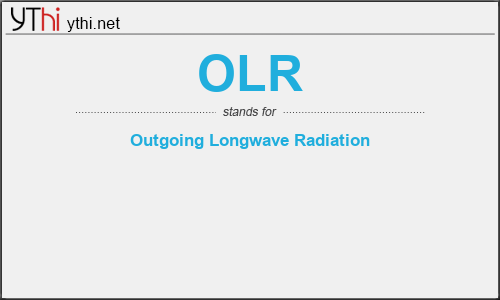What does OLR mean? What is the full form of OLR?
The Full Form of OLR is Outgoing Longwave Radiation.
Outgoing Long-wave Radiation (OLR) is electromagnetic radiation of wavelengths from 3–100 μm emitted from Earth and its atmosphere out to space in the form of thermal radiation. It is also referred to as up-welling long-wave radiation and terrestrial long-wave flux, among others. The flux of energy transported by outgoing long-wave radiation is measured in W/m2. In the Earth’s climate system, long-wave radiation involves processes of absorption, scattering, and emissions from atmospheric gases, aerosols, clouds and the surface.
Over 99% of outgoing long-wave radiation has wavelengths between 4 μm and 100 μm, in the thermal infrared part of the electromagnetic spectrum. Contributions with wavelengths larger than 40 μm are small, therefore often only wavelengths up to 50 μm are considered . In the wavelength range between 4 μm and 10 μm the spectrum of outgoing long-wave radiation overlaps that of solar radiation, and for various applications different cut-off wavelengths between the two may be chosen.
Radiative cooling by outgoing long-wave radiation is the primary way the Earth System loses energy. The balance between this loss and the energy gained by radiative heating from incoming solar shortwave radiation determines global heating or cooling of the Earth system (Energy budget of Earth’s climate). Local differences between radiative heating and cooling provide the energy that drives atmospheric dynamics.
OLR
means
Outgoing Longwave Radiation![]()
Translate Outgoing Longwave Radiation to other language.


Leave a Reply
You must be logged in to post a comment.